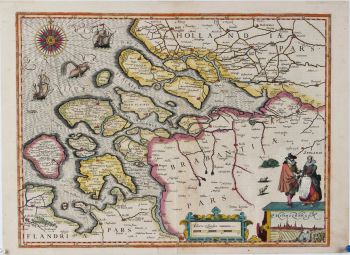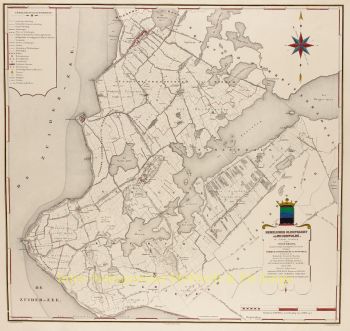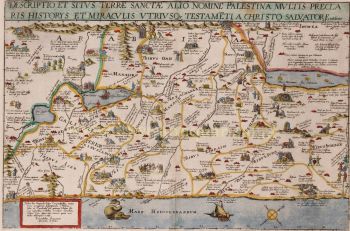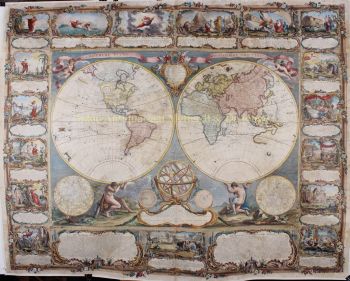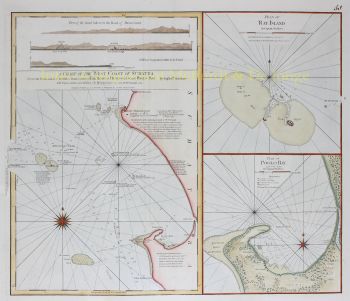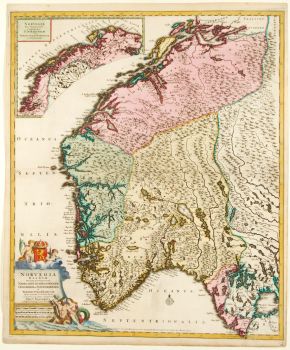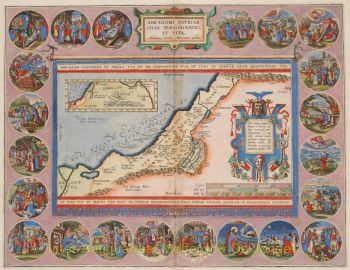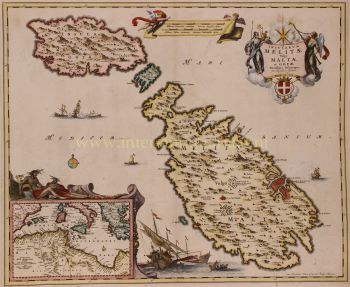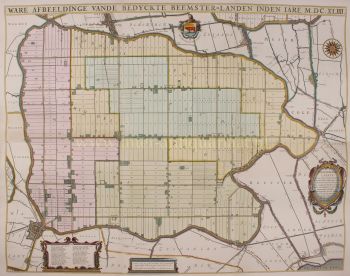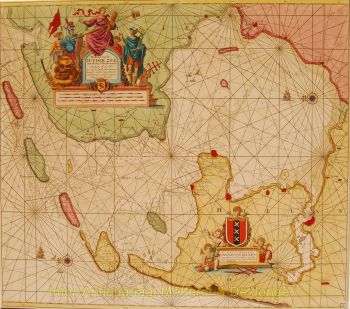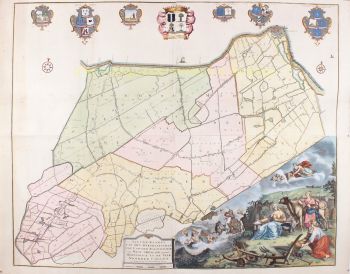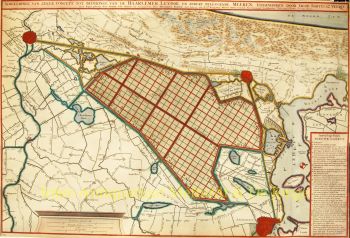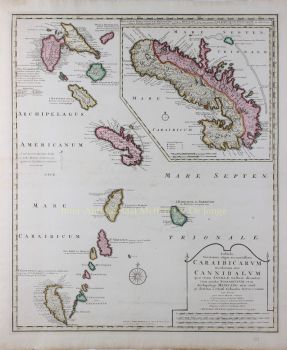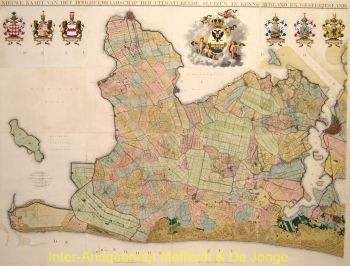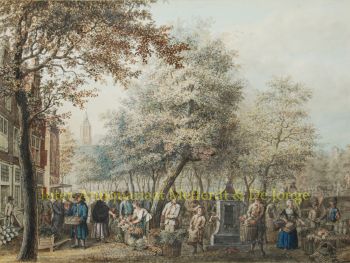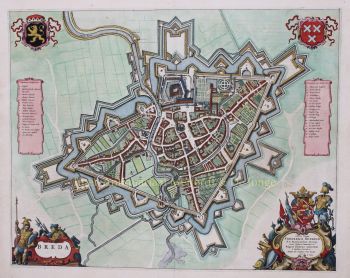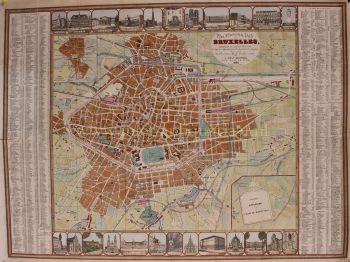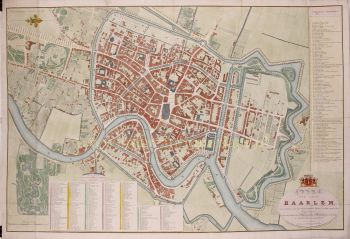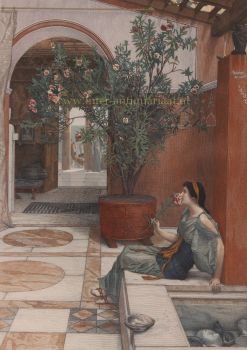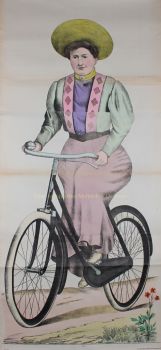Groningen 1622
Petrus Kaerius
€ 1.350
Inter-Antiquariaat Mefferdt & De Jonge
- About the artwork“Groninga Dominium”, copper engraving by Petrus Kaerius (Peter van der Keere) first published in 1617 in Amsterdam as part of Germaniae Inferior id est, XVII Provinciarum ejus novae et exactae Tabulae Geographicae, the first separately published atlas of the Seventeen Provinces Here in a second edition with French text on the verso side, published in 1622. Coloured by a later hand, Size: 37 x 48 cm. This fine early map of the Groningen region includes a view of the city of Groningen (copied from Lodovico Guicciardini) and two "Groningi" in their typical regional dress. Kaerius’ atlas "Germania Inferior" was published in only three editions: two in Latin in 1617 and one in French in 1622. After the death of his wife in 1623, Kaerius ran into financial difficulties and had to sell his copper plates. The new owner was Claes Jansz. Visscher, who reused them and brought the maps on the market under his own name. Price: Euro 1.350,-
- About the artist
Name: Petrus Kaerius / Pieter van den Keere / Pieter van der Keere
Pieter van den Keere was born in Ghent in 1571, but moved to London in 1584 because of the Spanish occupation with his sister Coletta. In 1587 she married the cartographer Jodocus Hondius, who became Pieter's tutor as a publisher and engraver.Van den Keere left London in 1593 to settle in Amsterdam, where he initially worked as an engraver for Hondius and later became an independent publisher.
In 1595 he published a large 10-page wall map of Europe, the Nova Totius Europae Descriptio. Petrus Kaerius' best-known work, the Germania Inferior, was first published in 1617.
It was an atlas that focused exclusively on the Netherlands, with an accompanying text by Petrus Montanus. However, times were bad for engravers and in the early 1620s van den Keere ran into financial difficulties. He was eventually forced to sell his copper plates, so that Claes Janszoon Visscher, for example, came into possession of the plates of the Germania Inferior.
From 1623 Kaerius was given the opportunity to contribute to the Atlas Minor by Hondius and between 1633 and 1645 he engraved another twenty atlas maps for Janssonius.
Importance for geography: Kaerius himself published some maps, such as the Great Wall Map of Europe (1595) and a World Map (1607). His most important work was the Germania Inferior (1617). This was the first separate atlas of the Netherlands and was also published shortly afterwards in a French and Latin version. Furthermore, he is mainly known for the numerous engravings he made for third parties.
Are you interested in buying this artwork?
Artwork details
Related artworks
- 1 - 2 / 2
- 1 - 4 / 24
- 1 - 4 / 12


